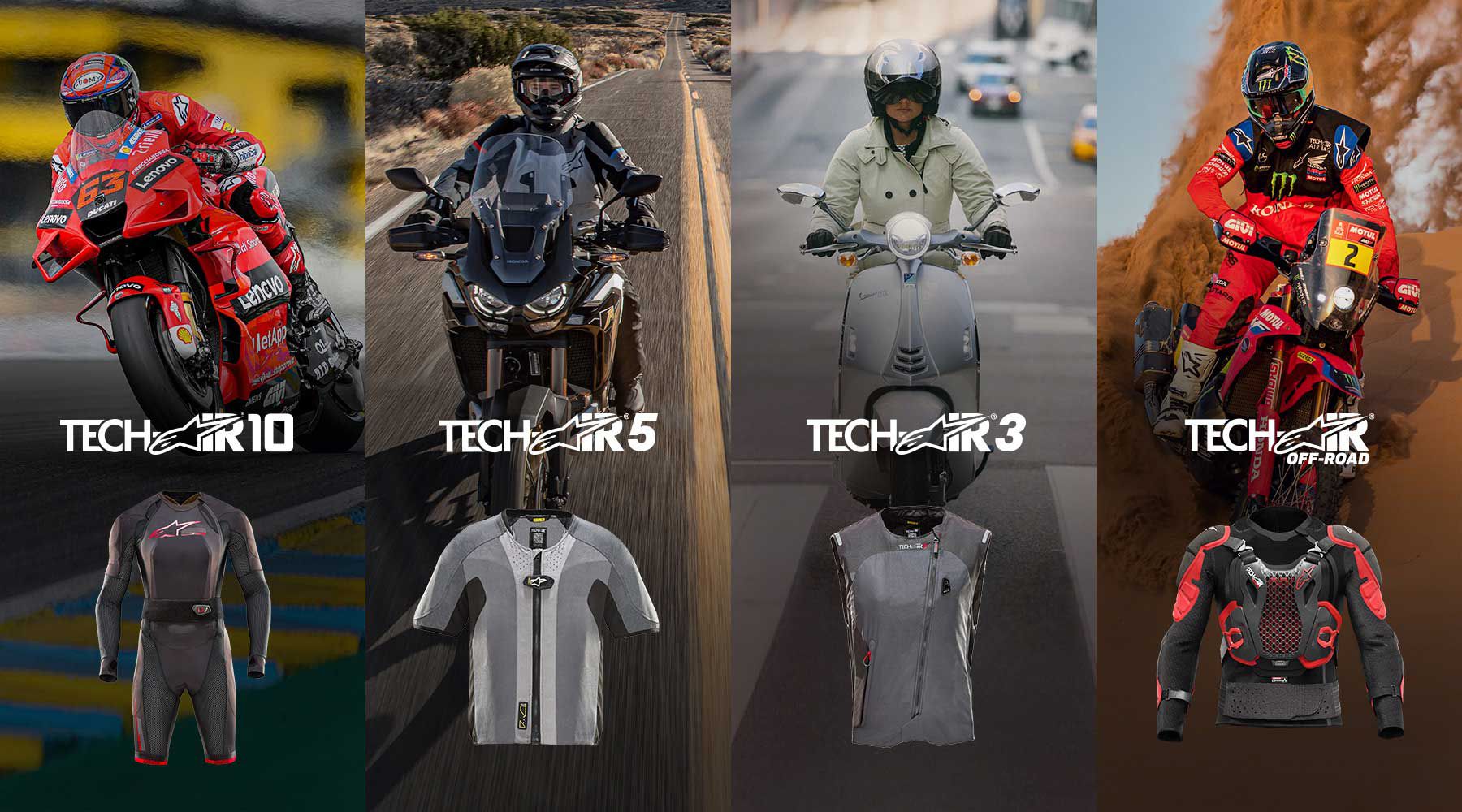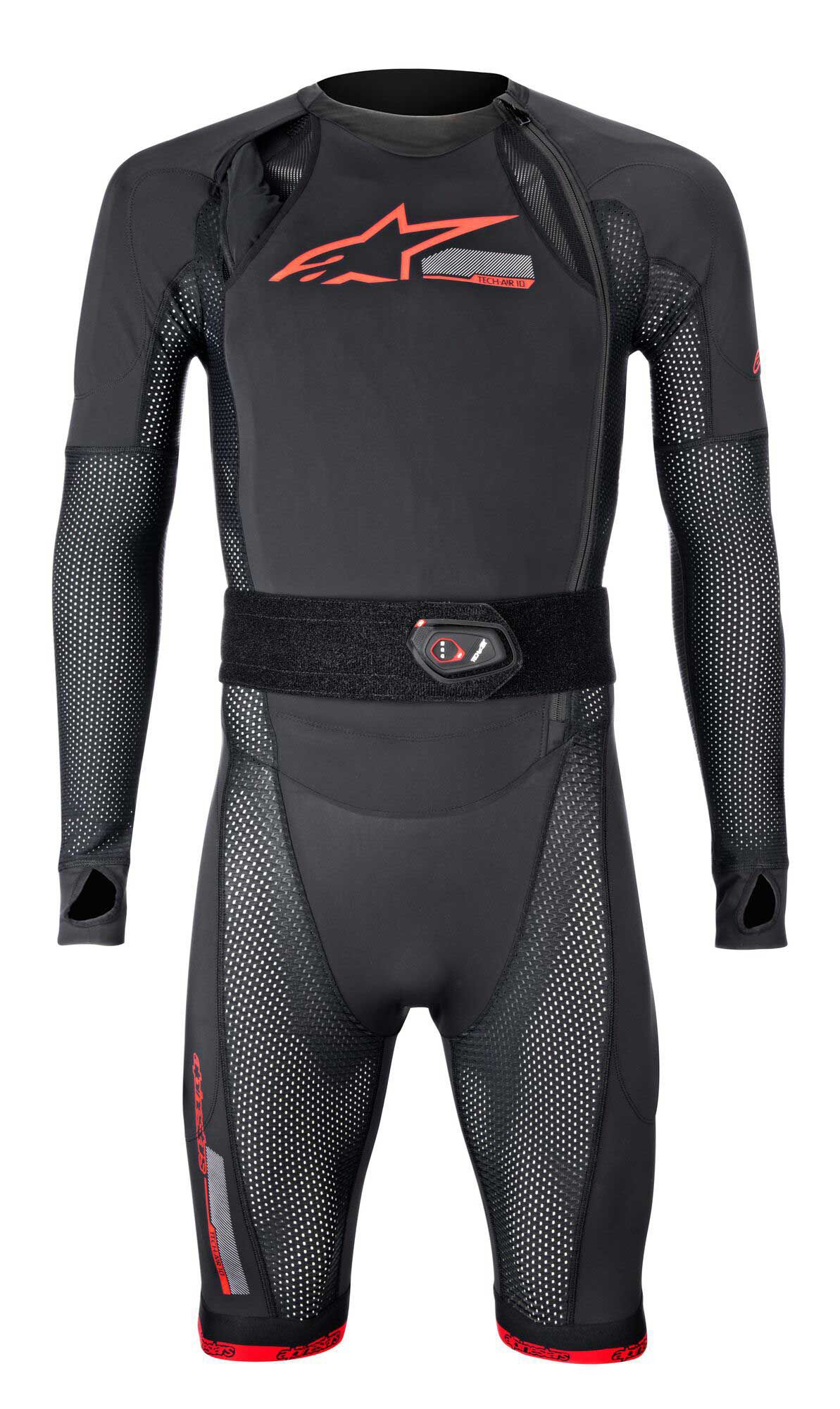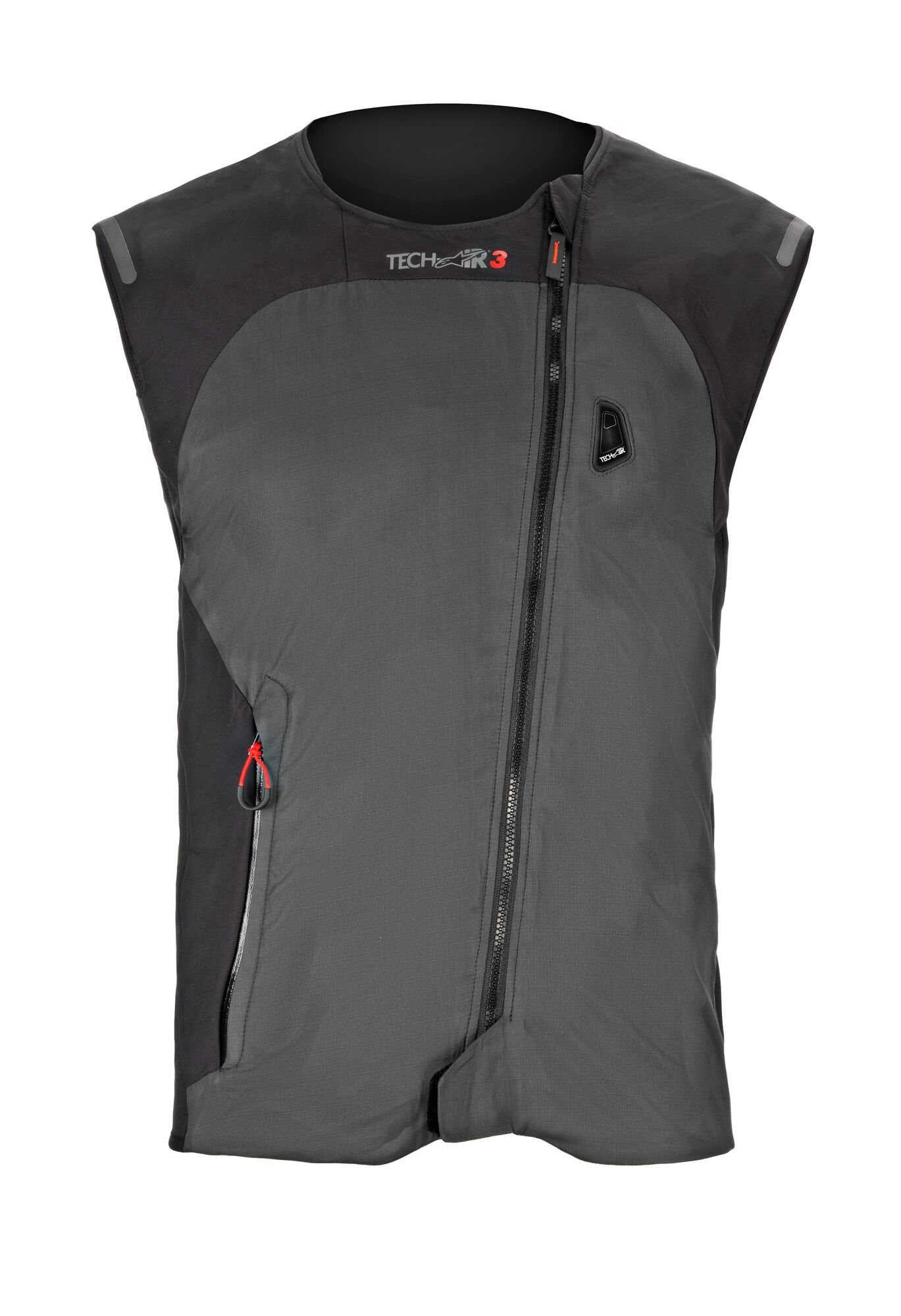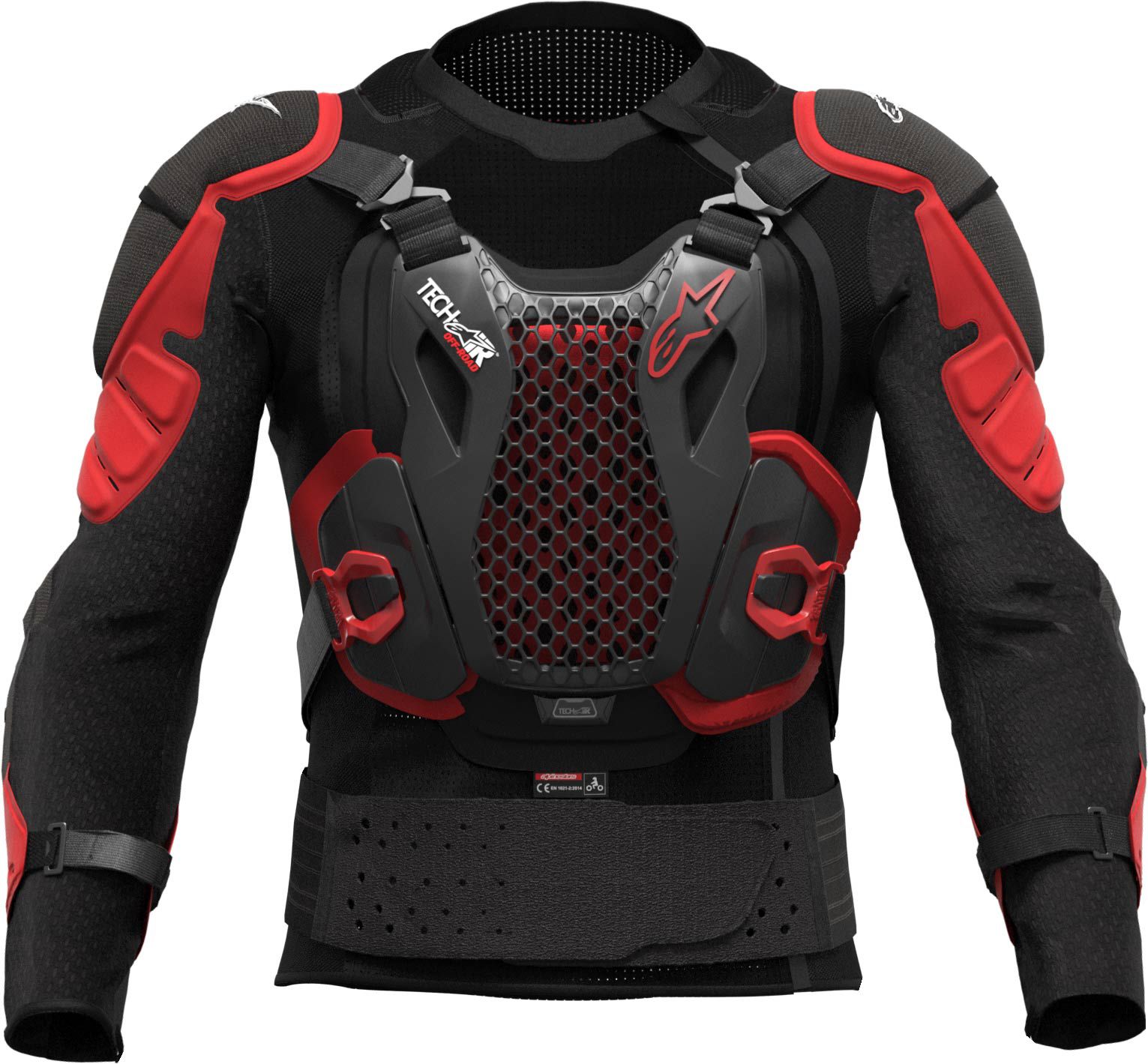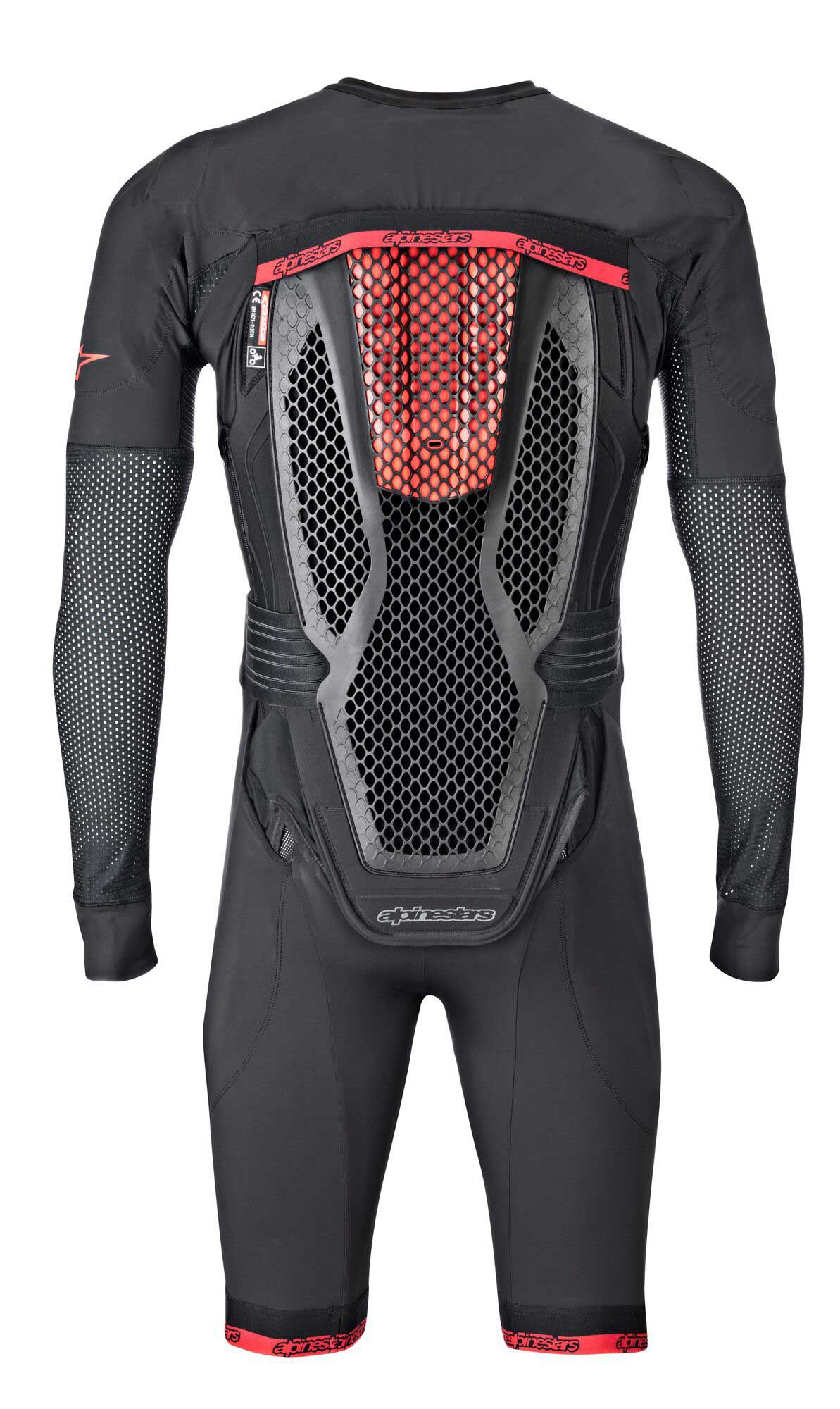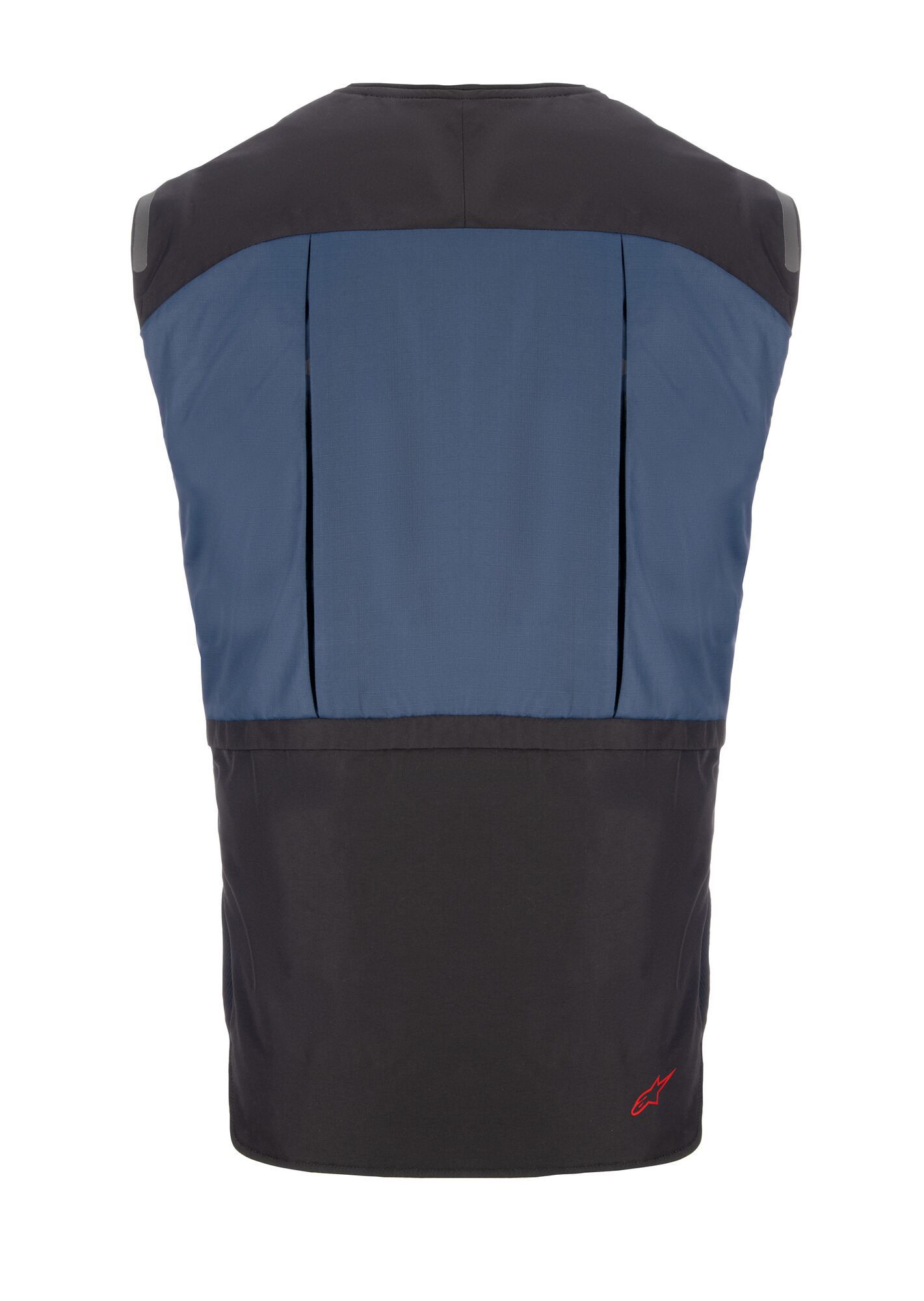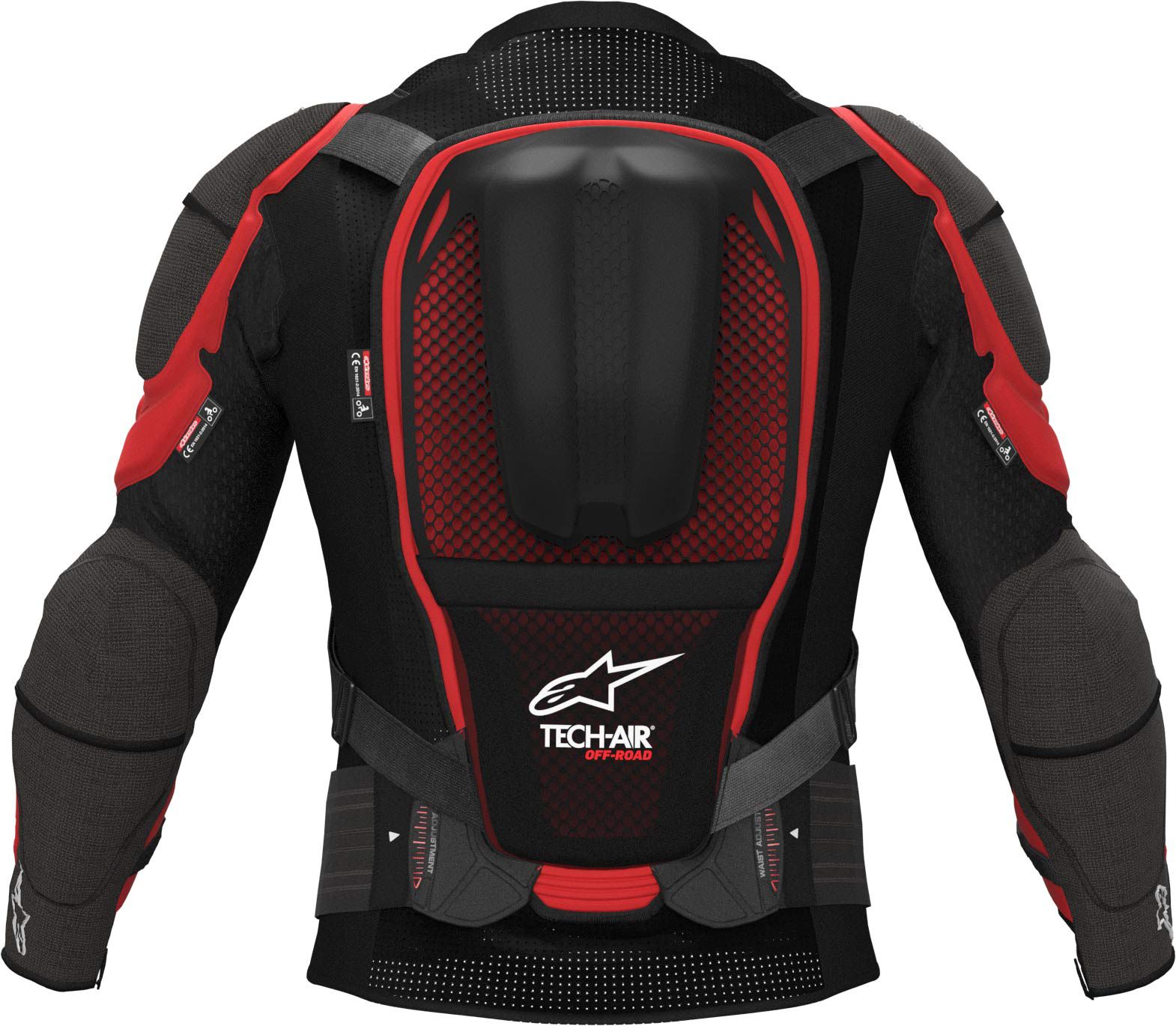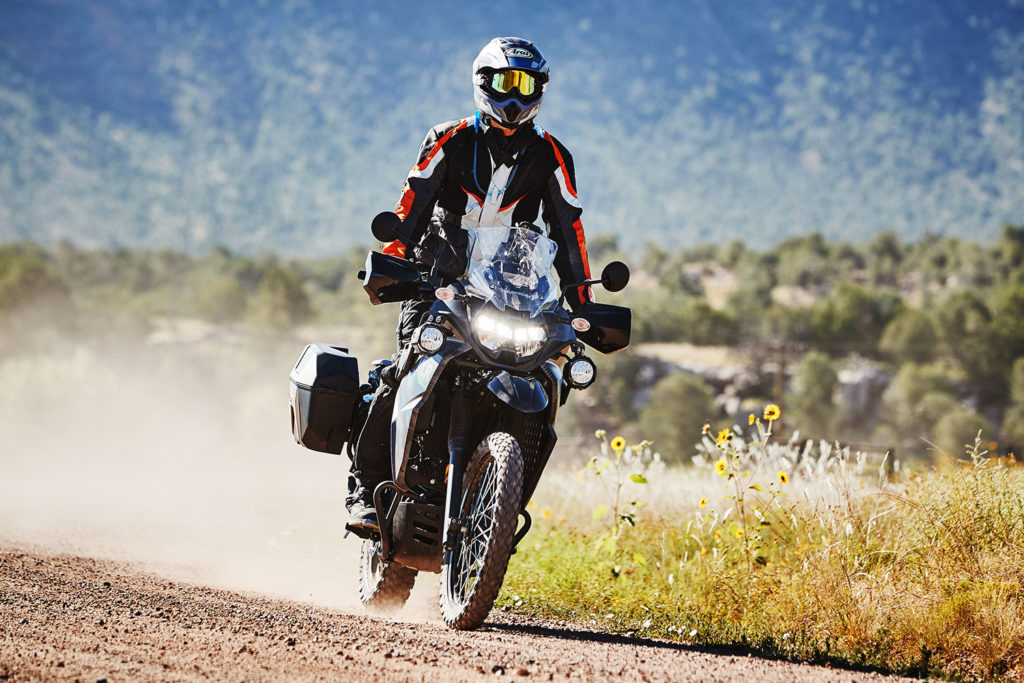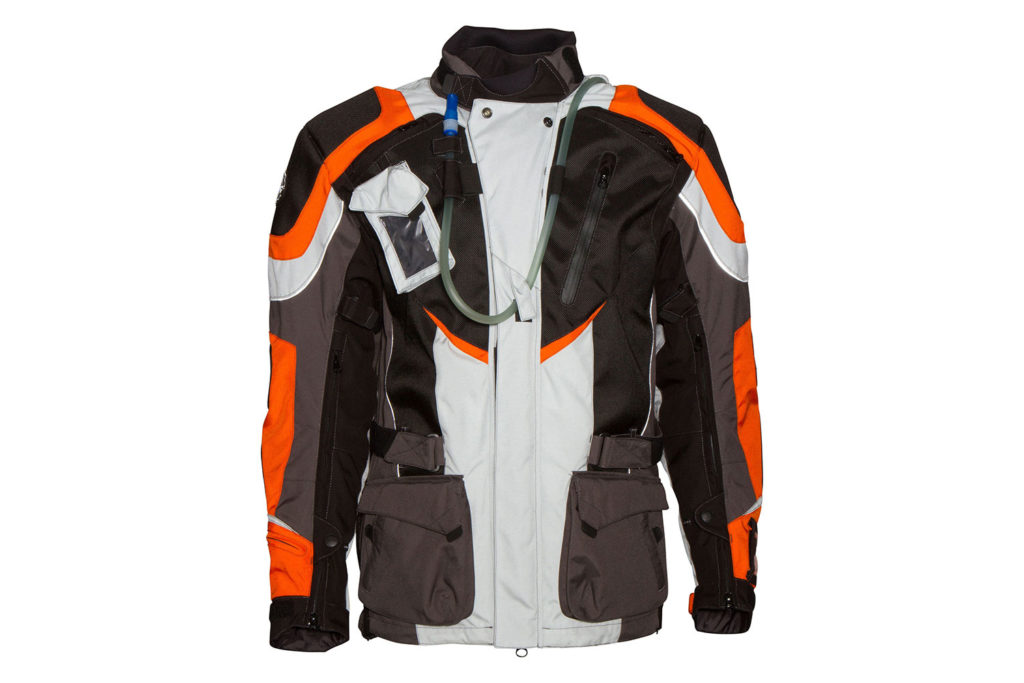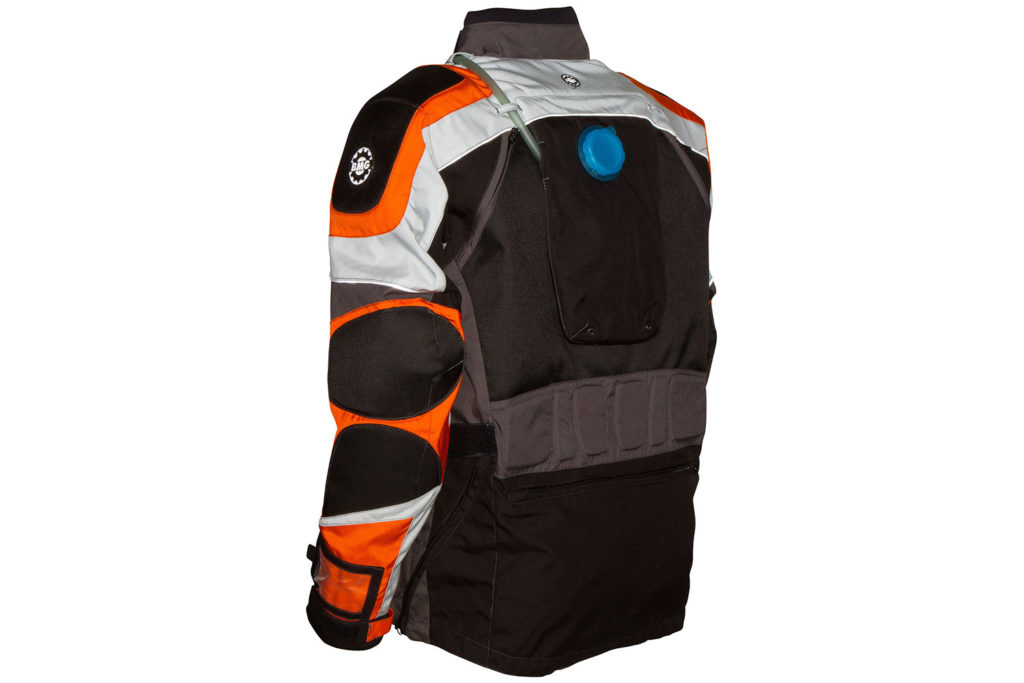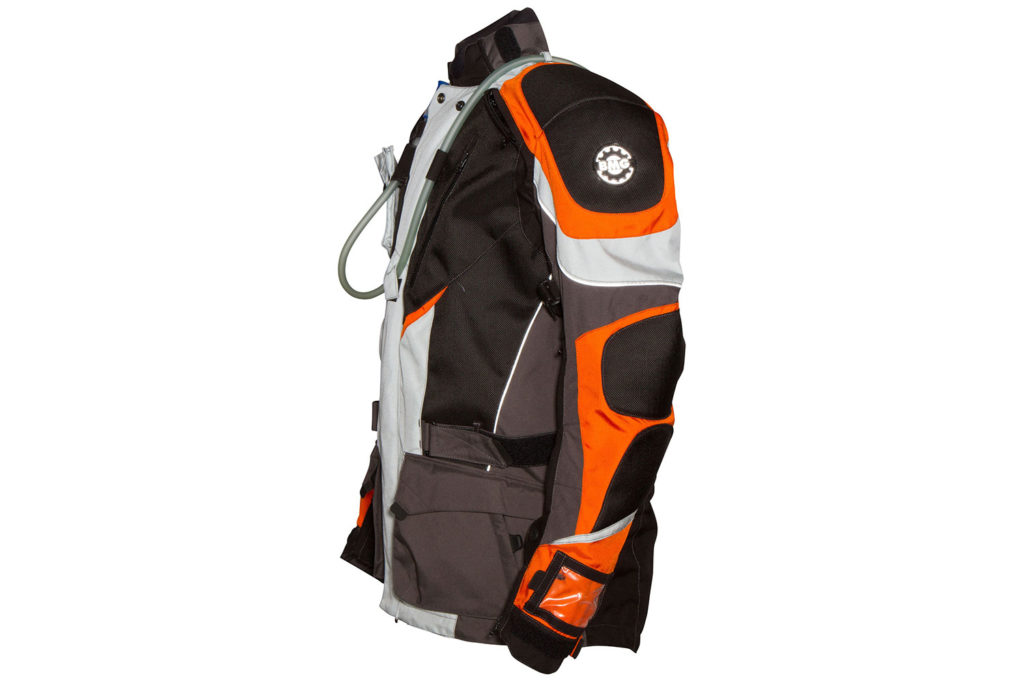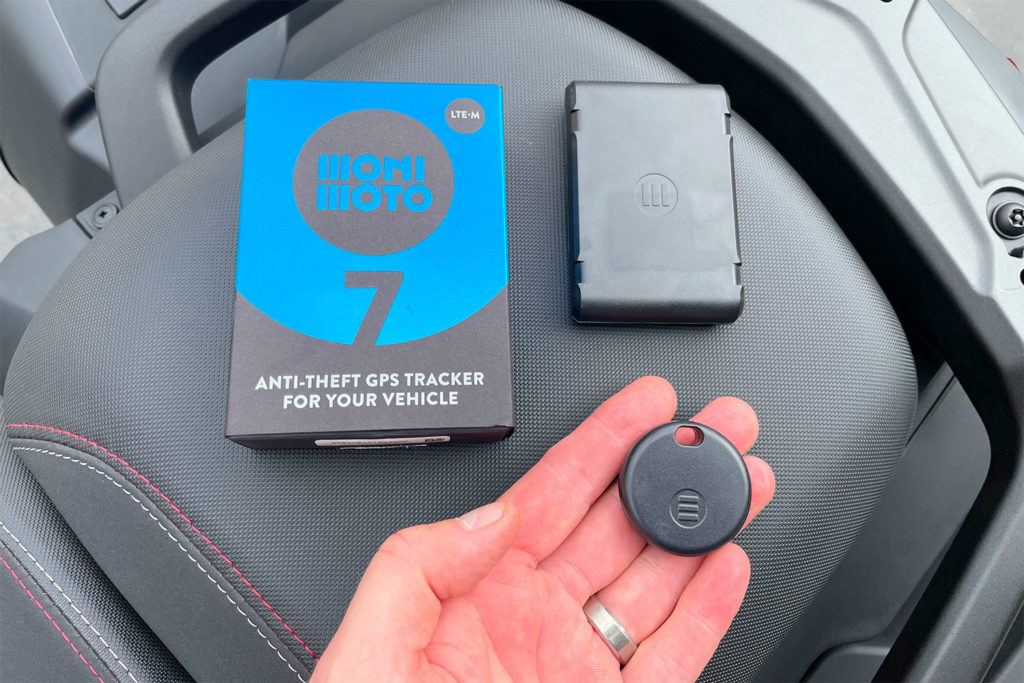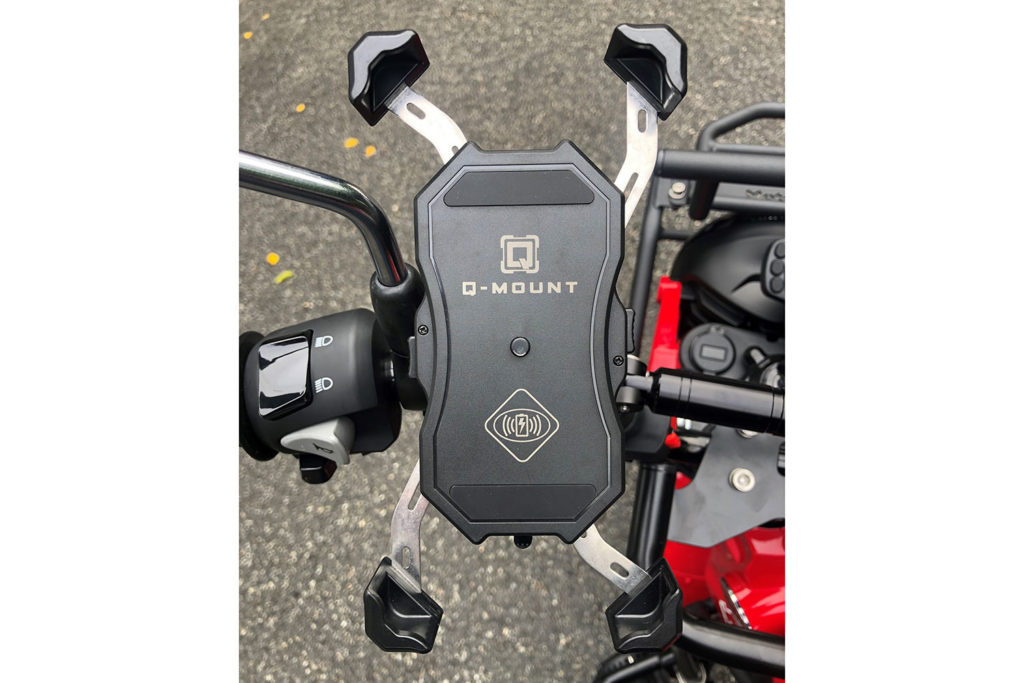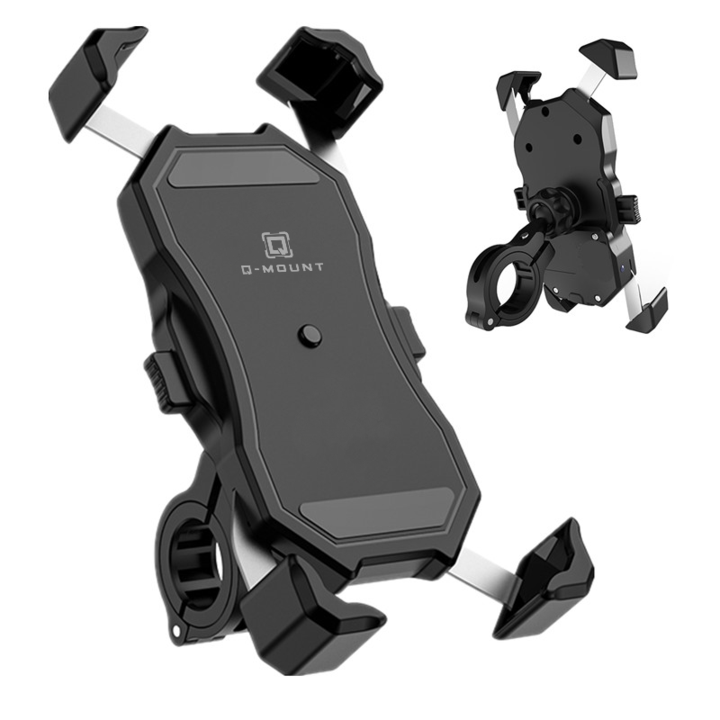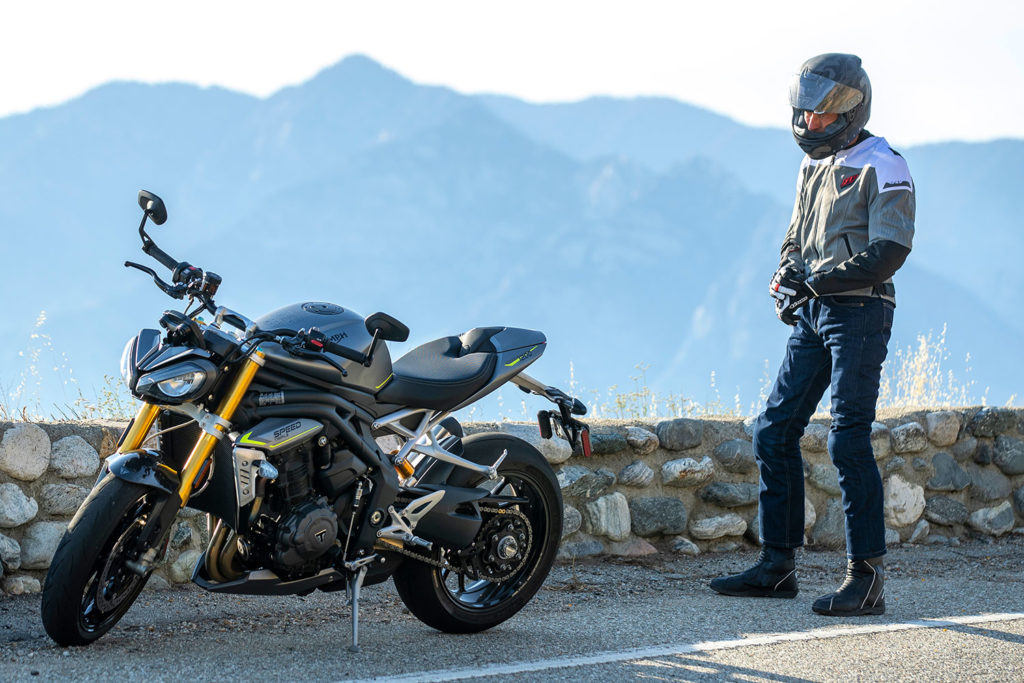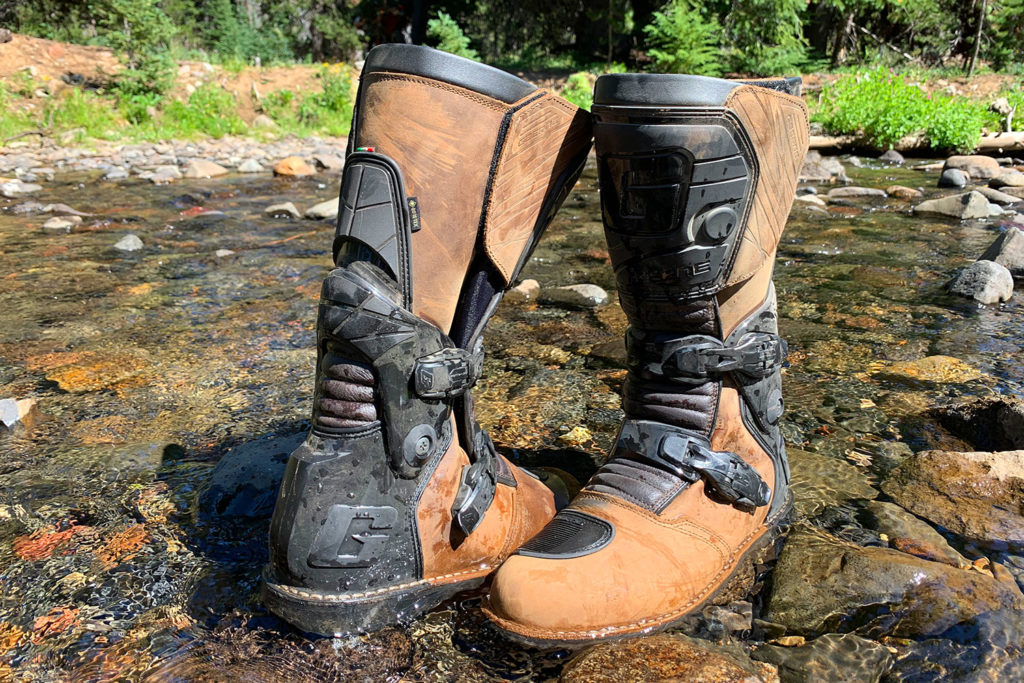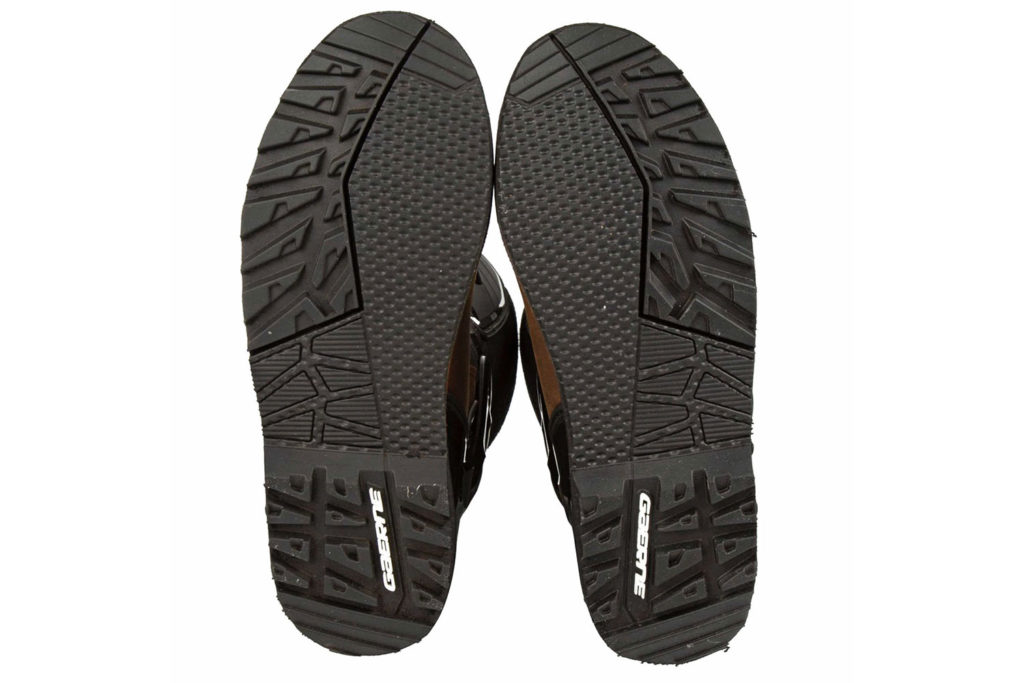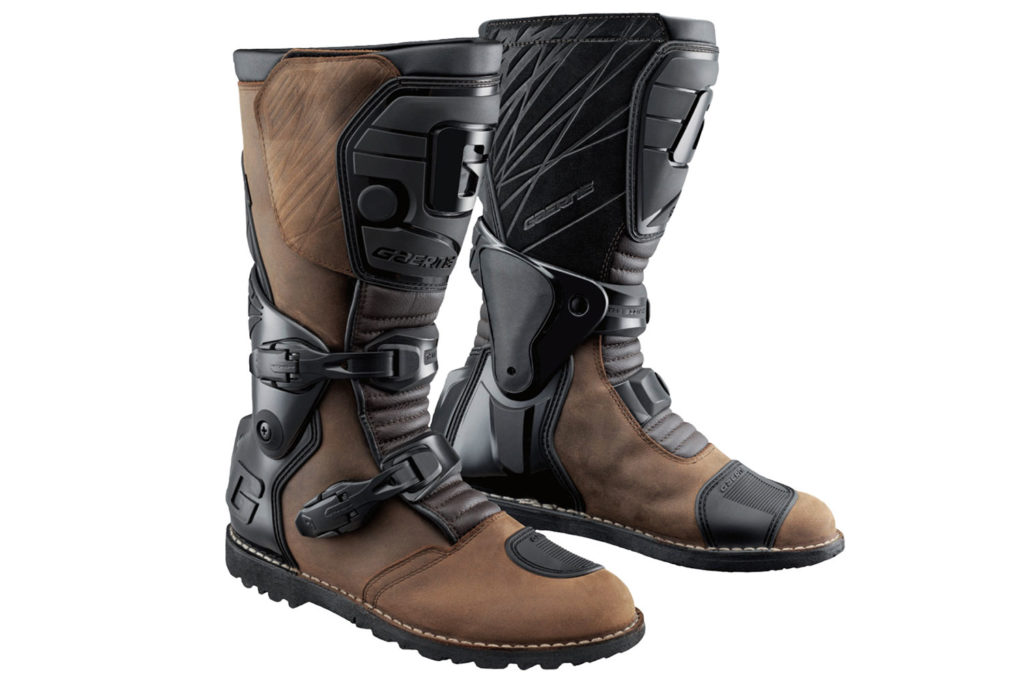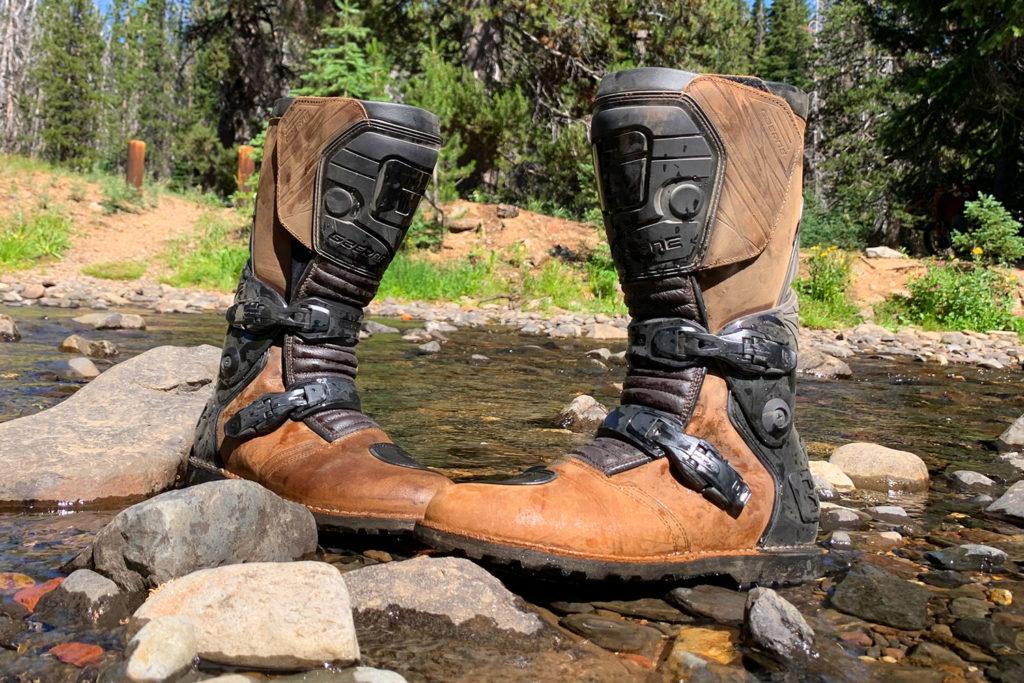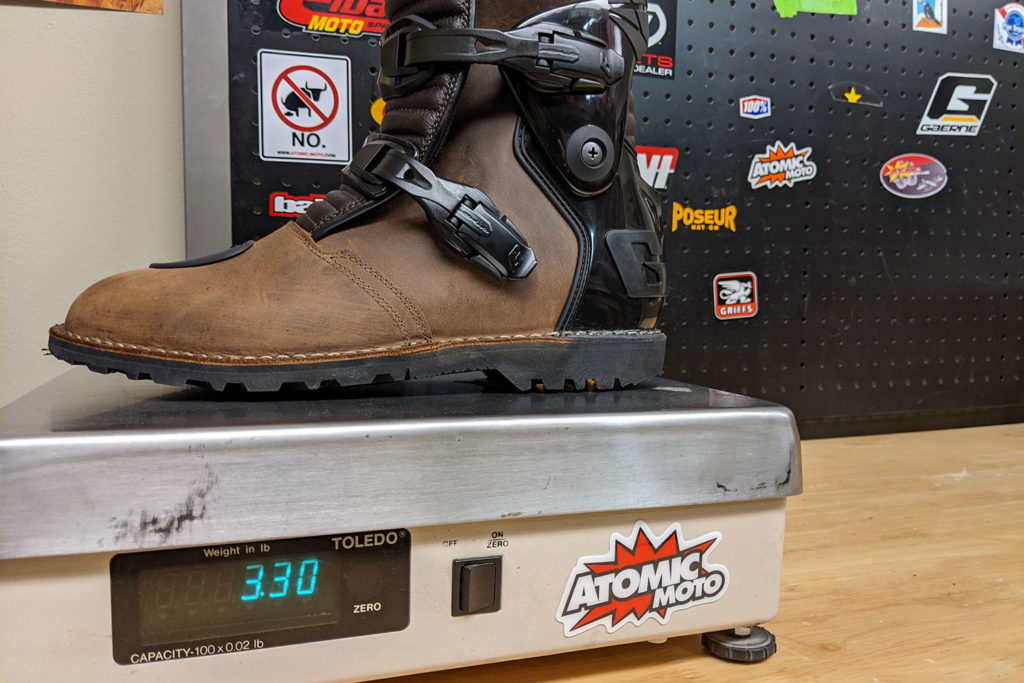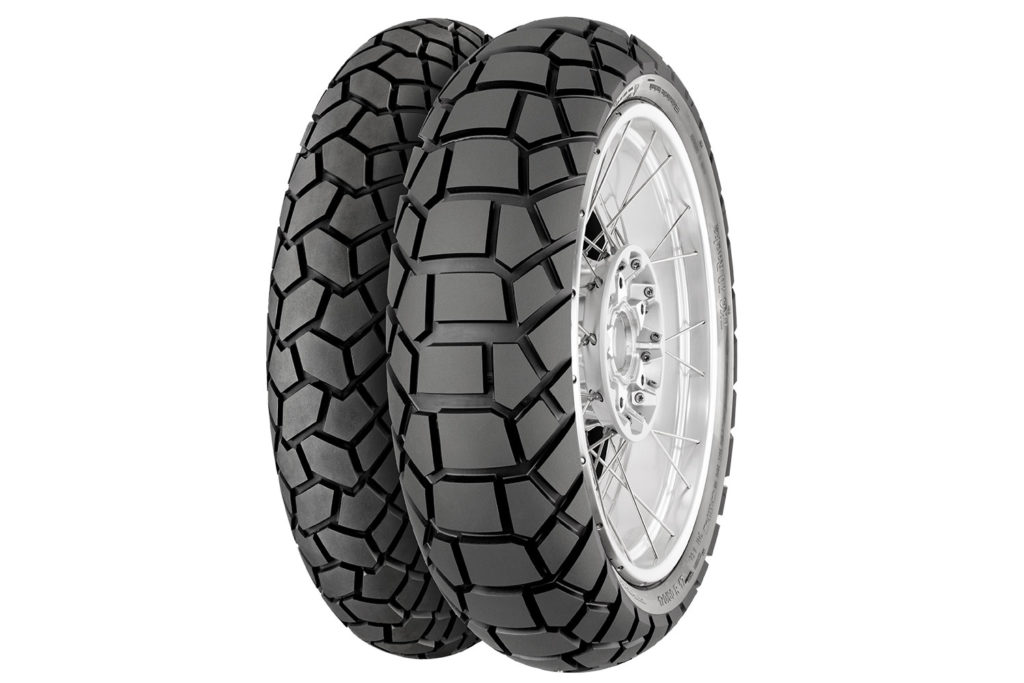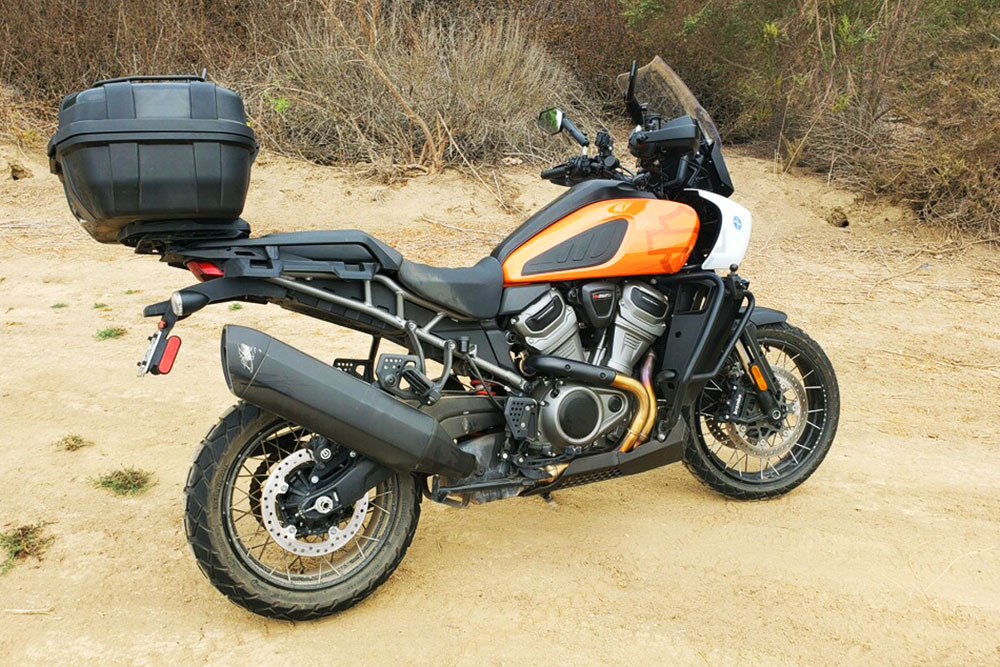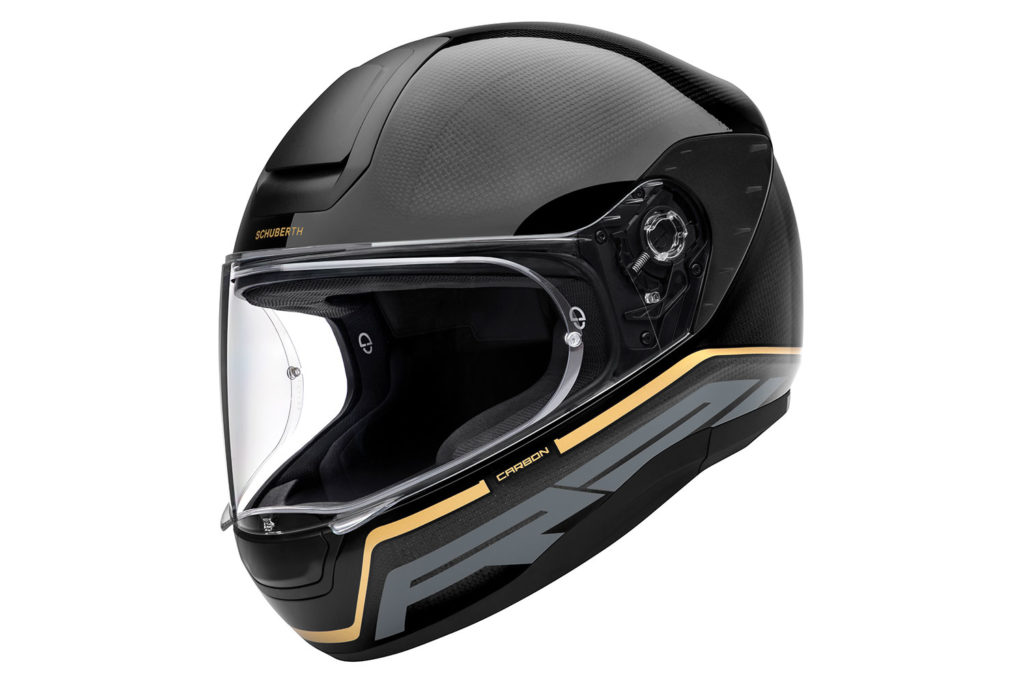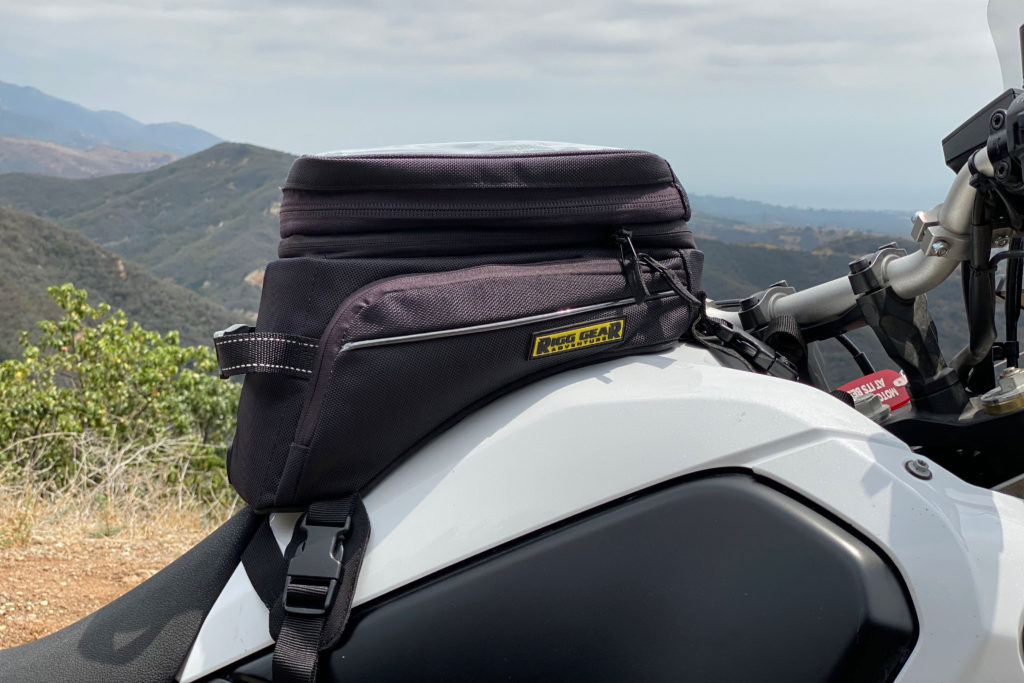
Whether cruising the pavement or banging along a remote dirt road, tankbags are a rider’s most convenient place for storing frequently used items. Where else could I keep my sunscreen, hat, and snacks so easily at hand? I’ve used several high-capacity bags over the years on various motorcycles, and although appealing for the sheer volume of stuff they hold, I find large bags can also interfere with bike control. This is most noticeable when standing on the pegs while riding off-pavement. The Nelson-Rigg Trails End model, part of its Rigg Gear Adventure line, creates no such problem.
It has a useful 12-liter capacity, and is expandable vertically to 16.5 liters. Securely mounted to my Yamaha Ténéré 700’s tank with four side-release buckles and the requisite straps, it stays put over the roughest ground, yet is easy to partially remove for fueling. The Trails End’s base is slightly tacky to assist in stabilizing it, and there are protective fabric tabs where the straps contact the tank.
Check out more of Rider’s motorcycle gear reviews
Sewn from UltraMax synthetic fabric, which is said to resist fading (as it has for 8 months), the Trails End maintains its tapered, box-like shape, and it features reflective piping all around. The twin zippers are easy to operate and designed to prevent dust entry, and the two narrow side pockets are large enough for my faceshield cleaning kit, a few small tools, and a notebook.
RELATED: 2021 Yamaha Ténéré 700 | Long-Term Ride Review (Part 2)
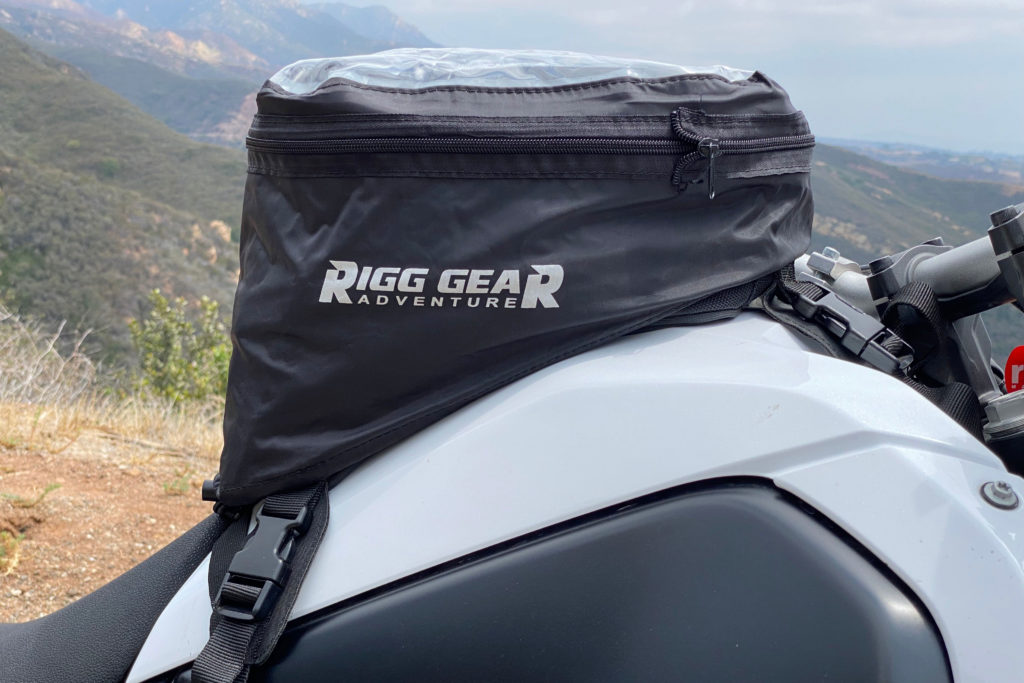
Perhaps best of all, the left pocket doesn’t sound the 700’s horn with the bars at full lock. Since the bag is narrow, the map pocket can’t accept two folds of an AAA map, requiring some field origami to make one fit. The clear top is touchscreen-friendly and includes an inside pocket with a net to hold a phone, but my phone had to be securely supported from below (as in stuffing a shirt in the bag) for me to use it easily. At the rear of the bag is a weather-resistant power port; from there, a cord can be run into the map pocket.
With the bag in its unexpanded configuration, the extra two-layer body material from the extension crowds the interior a bit without seriously limiting volume. The large hump of my Yamaha’s tank steals space too, so those extra 4.5 liters when the bag is expanded are invaluable for stashing an extra layer or stocking up on Fritos at the last gas stop before camp. This is a handsome, well-built bag, with its only flaw being some imperfect sewing to attach the map pocket net and second power port.
The Nelson-Rigg Trails End Adventure has a lifetime warranty against defects in materials and workmanship, and comes with a tight-fitting rain cover with a clear top and the ability to extend to protect the expanded bag. It sells for just $119.95.
For more information, visit nelsonrigg.com.
The post Nelson-Rigg Trails End Adventure Tank Bag | Gear Review first appeared on Rider Magazine.
Source: RiderMagazine.com

